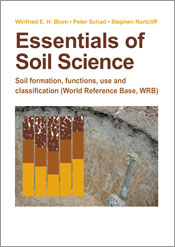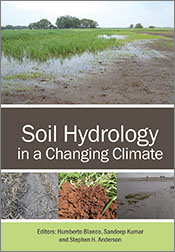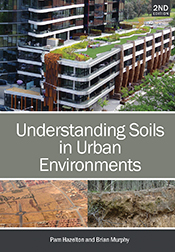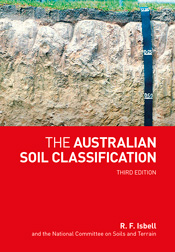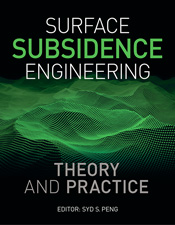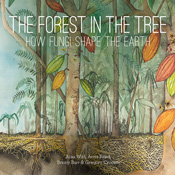Essentials of Soil Science
Soil Formation, Functions, Use and Classification (World Reference Base, WRB)
By: Winfried EH Blum, Peter Schad, Stephen NortcliffA comprehensive introduction to soil science for all those looking to understand soils, their functions and their importance.
This book is an introduction to soil science and describes the development of soils, their characteristics and their material composition as well as their functions in terrestrial and aquatic environments. Soil functions include the delivery of goods and services for human society, such as food, clean water, and the maintenance of biodiversity. + Full description
Essentials of Soil Science is illustrated with many coloured figures and tables to accompany the text and ease its understanding. Particularly, the chapter on soil classification, based on the World Reference Base for Soil Resources (WRB), includes numerous coloured pictures to facilitate understanding the characteristics of particular soil types. Chapters on soil protection and remediation as well as on soil monitoring and the history of soil sciences conclude the book together with a comprehensive alphabetical index, allowing for a quick and easy orientation about the most important terms in soil sciences.
This concise, yet comprehensive text is ideal reading for all those looking to understand soils, their functions, their importance in terrestrial and aquatic environments and their contribution to the development of human society. It will provide a valuable resource for teachers, practitioners and students of soil science, agriculture, farming, forestry, gardening, terrestrial and aquatic ecology and environmental engineering.
- Short descriptionNews
Sales in Australia and New Zealand only. Elsewhere, this title is available through Schweizerbart Science Publishers.
Reviews
"This small book...is truly a ‘tour de force’ of condensation of the essentials of scientific knowledge and approaches to soil soil science."
Peter McMaugh, Agricultural Science 29(2) & 30(1)
Details
Paperback | December 2017 | $ 59.95ISBN: 9781486308910 | 176 pages | 240 x 170 mm
Publisher: CSIRO Publishing
Illustrations, Tables
Features
- First English translation of the German language 7th edition text
- Ideal reading for anyone looking to understand soils, their functions and their importance in terrestrial and aquatic environments
- Comprehensive alphabetical index provides quick and easy orientation to the most important soil science terms
- Supplemented throughout with colour photographs, illustrations and diagrams
Contents
ForewordAbout the authors
1 Introduction
2 Soil components
3 Soil characteristics
4 Soil formation (Pedogenesis)
5 Soil Classification
6 Soils in the environment
7 Soil as a plant-growing medium
8 Soil information systems
9 History of soil science
References
Subject index
Authors
Winfried E.H. Blum is Emeritus Professor of Soil Science at the University of Natural Resources and Life Sciences (BOKU) Vienna, Austria. Professor of soil science at Freiburg University/Germany, State University of Paraná in Curitiba/Brazil and BOKU University in Vienna/Austria. Member of numerous learned national and international organisations worldwide. Author of more than 800 scientific publications including books and monographs in 15 languages with numerous distinctions and awards.
Peter Schad is a lecturer of soil science at the Technical University of Munich (Germany). He holds a Master's Degree in Biology and a PhD in soil science. He is the lead author of the current edition of the international soil classification system WRB. During his countless excursions worldwide, he has been able to familiarize himself with the soils of all ecozones across the globe.
Stephen Nortcliff is Emeritus Professor of Soil Science at Reading University, United Kingdom. He joined Reading in 1978, teaching and researching in a wide range of soil science areas. His initial research focus was in soil variability and its characterisation to assist soil survey and soil mapping. He subsequently worked on the sustainable management of soils of the Tropics. Within the United Kingdom he worked on the use of recycled organic residues in the form of compost and anaerobic digestates to reduce the requirements for inorganic fertiliser inputs. He was Secretary General of the International Union of Soil Sciences from 2002 to 2010 and continues to be actively involved in the Union's management.

